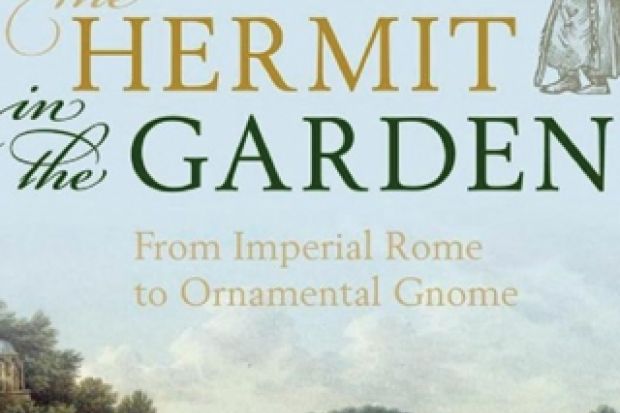This is a curious book to have come out of Oxford University Press in that it is written in a refreshingly accessible style, displays much erudition, yet has no scholarly footnotes and often engages in throwaway remarks apparently aimed at the celebrity-conscious general reader. When Gordon Campbell discusses the hermitage at Luttrellstown, now a luxury Irish resort, he writes: “There are, alas, no wedding photographs of Victoria and David [Beckham] at the hermitage because it disappeared long ago.” Similarly, when dealing with Sir Francis Dashwood’s raunchy Friars of St Francis at Medmenham, who regularly lured local girls to their cells for less than religious practices, he brands them “the Hooray Henrys of the eighteenth century”. Campbell takes his subject seriously but wears his learning lightly, and is not above giving the reader a gentle nudge in the ribs.
In an age of lavishly produced books, Campbell’s study looks old- fashioned. It is small and sparsely illustrated for such a photogenic subject, with only 42 monochrome images and 12 colour plates. Its text relies on Barbara Jones’ seminal 1974 work Follies and Grottoes and Isabel Colegate’s A Pelican in the Wilderness: Hermits, Solitaries and Recluses (2002), not to mention several recent county garden histories. It also takes advantage of research by garden history scholars, such as Dianne Barre’s work on The Wodehouse in Wombourne, Staffordshire. There, the architectural centrepiece of a wood dotted with eclectic buildings was Father Francis’ Hermitage, complete with automaton, which was subject in the 18th century to vandalism by thugs from Wolverhampton.
Garden buildings housed salaried hermits, who would delight visitors with their unkempt appearance and poetic eulogies
This, then, is a synthesis, pitched for the general reader but none the worse for that. Its strength is Campbell’s interweaving of cultural and architectural history with literary references ranging from the Classics to the melancholic “Graveyard Poets”. These pre-Romantic writers made sense of that fleeting mid-Georgian landscape fashion, before the disastrous onset of Capability Brown’s vapid minimalism, for garden buildings that either housed salaried hermits, who would delight visitors with their unkempt appearance and poetic eulogies, or were simply places of retreat and contemplation set deep in the landscape.
Campbell tracks the life eremitical from Hadrian’s moated retreat at his Tivoli villa, through Pope Paul IV’s villa suburbana in the Belvedere gardens to the proliferation of hermitages in the age of sensibility. Interestingly, Pope Francis has similarly decided to shun the pomp of the Vatican apartments for his kitchenette and the simple life espoused by St Francis. In contrast, not all Georgian hermits had to endure such privation. In the summer of 1763, the botanist Gilbert White persuaded his brother Harry to moonlight as a hermit at Selborne and entertain the Battie sisters, who were dressed as shepherdesses. After which, Harry returned to his comfortable Andover rectory.
This trawl through hermitages reads a little like an English Heritage list enlivened with anecdotes, but when Campbell comes to the “Celtic Lands”, the pace quickens, with the grotto-fancier Mary Delany at the heart of this chapter. One glaring omission, however, is Wales, where, Campbell tells us, “there are apparently no hermitages”. This is unfortunate as the Principality either has, or had, several, most notably at Lord Milford’s romantic walk by the river at Picton Castle, Dyfed, and a rustic hermitage in the folly group at Glynllifon, Gwynedd.
The Hermit in the Garden ends with “Afterlife of the Hermit”, a trendy nod to reception theory, although it deals, bizarrely, with the view that “the garden gnome might be seen as a cultural remnant of the garden hermit”. This is a step too far for this reviewer, although the inclusion of contemporary hermitages and Campbell’s analysis of Tom Stoppard’s Arcadia as a “reworking of the eighteenth-century idea of the hermit in the garden” make a fitting conclusion to an absorbing study.
The Hermit in the Garden: From Imperial Rome to Ornamental Gnome
By Gordon Campbell
Oxford University Press, 2pp, £16.99
ISBN 9780199696994
Published 28 March 2013
Register to continue
Why register?
- Registration is free and only takes a moment
- Once registered, you can read 3 articles a month
- Sign up for our newsletter
Subscribe
Or subscribe for unlimited access to:
- Unlimited access to news, views, insights & reviews
- Digital editions
- Digital access to THE’s university and college rankings analysis
Already registered or a current subscriber?




